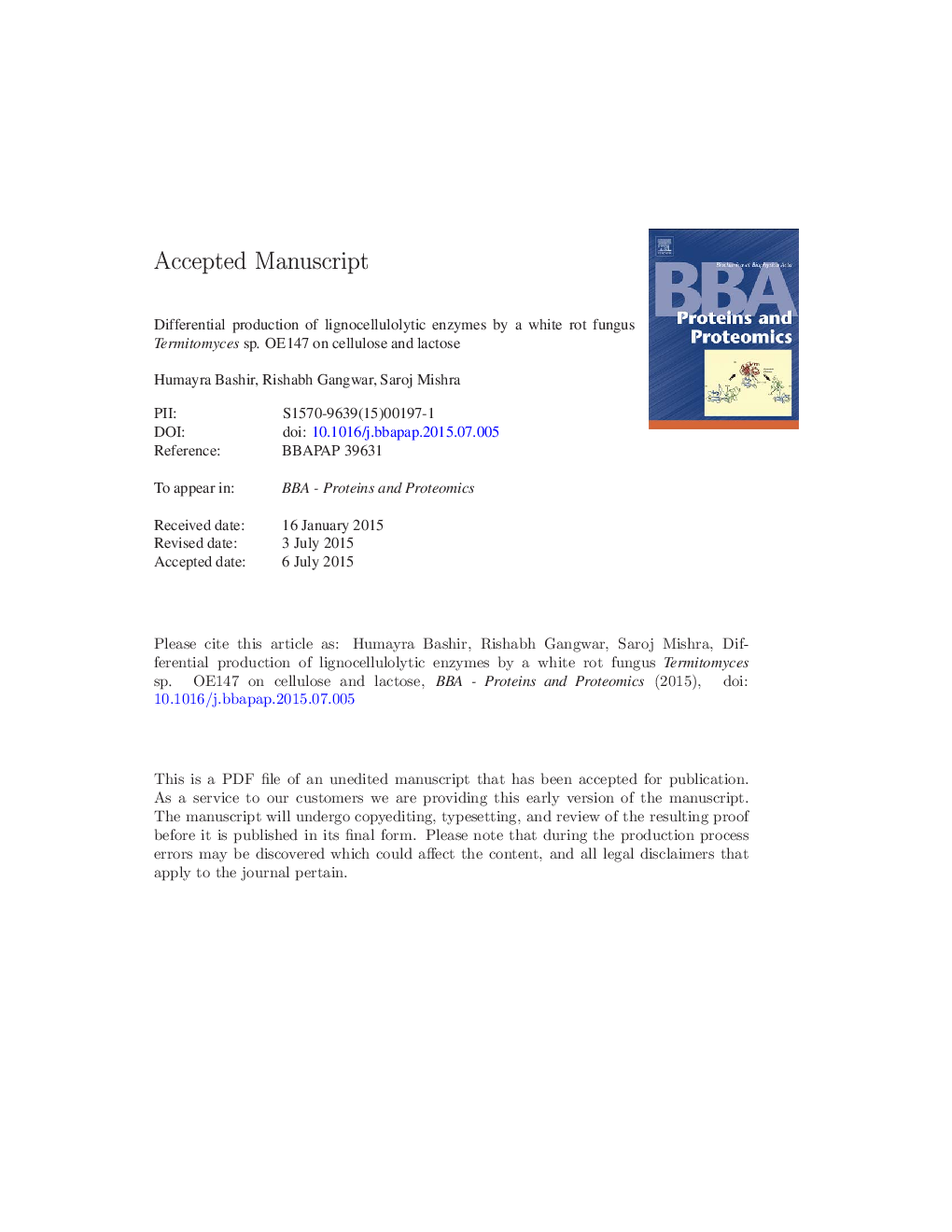| Article ID | Journal | Published Year | Pages | File Type |
|---|---|---|---|---|
| 10536779 | Biochimica et Biophysica Acta (BBA) - Proteins and Proteomics | 2015 | 44 Pages |
Abstract
White-rot fungi are the only organisms known to degrade all basic wood polymers using different strategies of employing a variety of hydrolytic and oxidative enzymes. A comparative secretome analysis of Termitomyces sp. OE147 cultivated on cellulose and lactose was carried out by two-dimensional gel electrophoresis followed by MALDI-TOF/TOF-MS analysis to identify the enzymes coordinately expressed on cellulose. A total of 29 proteins, belonging to CAZy hydrolases (11), CAZy oxidoreductases (13) and some 'other' (5) proteins were identified. Among the CAZy hydrolases, a distinct repertoire of cellulolytic and hemicellulolytic enzymes were produced while among the CAZy oxidoreductases, cellobiose dehydrogenase and laccase were the predominant enzymes along with H2O2 dependent peroxidases. This coordinated expression indicated a unique and integrated system for degradation of not only crystalline cellulose but also other components of lignocellulolytic substrates, namely lignin and xylan. Activities of the identified proteins were confirmed by plate assays and activity measurements. Many of the enzyme activities were also correlated with reduction in the crystallinity index of cellulose. Based on the enhanced production of CDH, β-glucosidases and several oxidoreductases, a more prominent role of these enzymes is indicated in this fungus in cellulose breakdown.
Related Topics
Physical Sciences and Engineering
Chemistry
Analytical Chemistry
Authors
Humayra Bashir, Rishabh Gangwar, Saroj Mishra,
